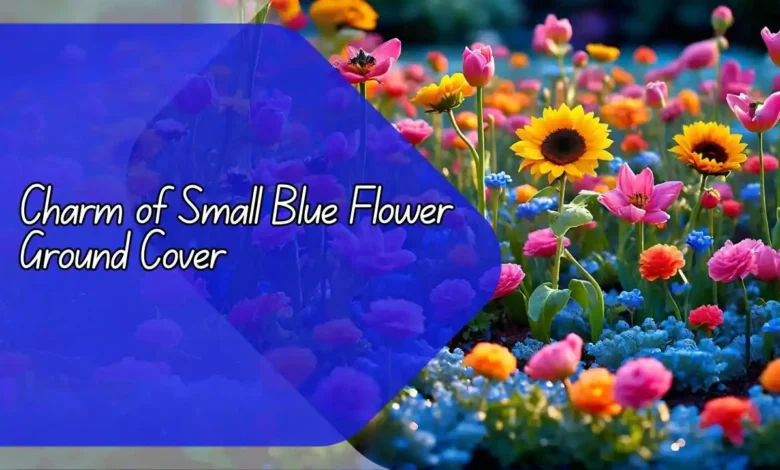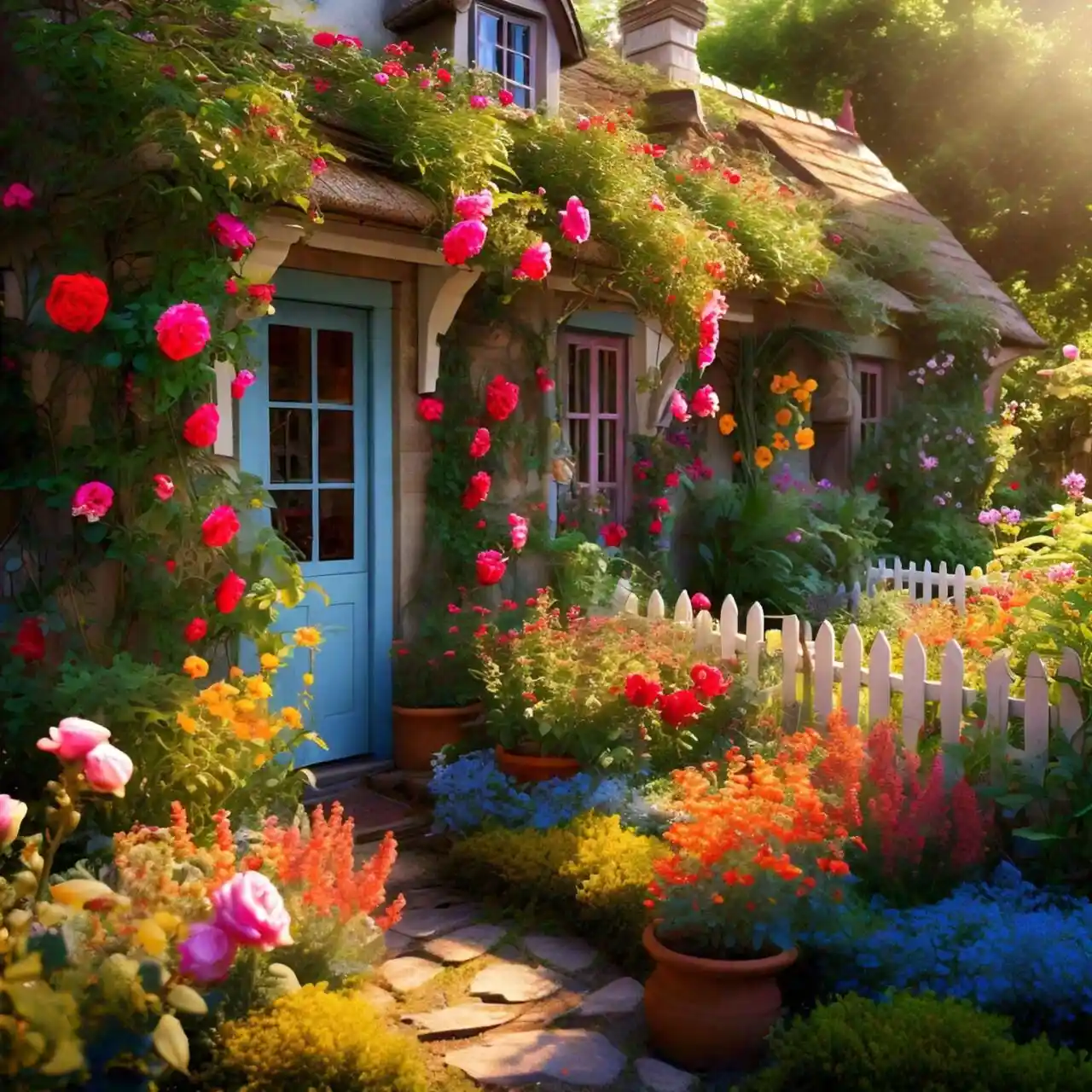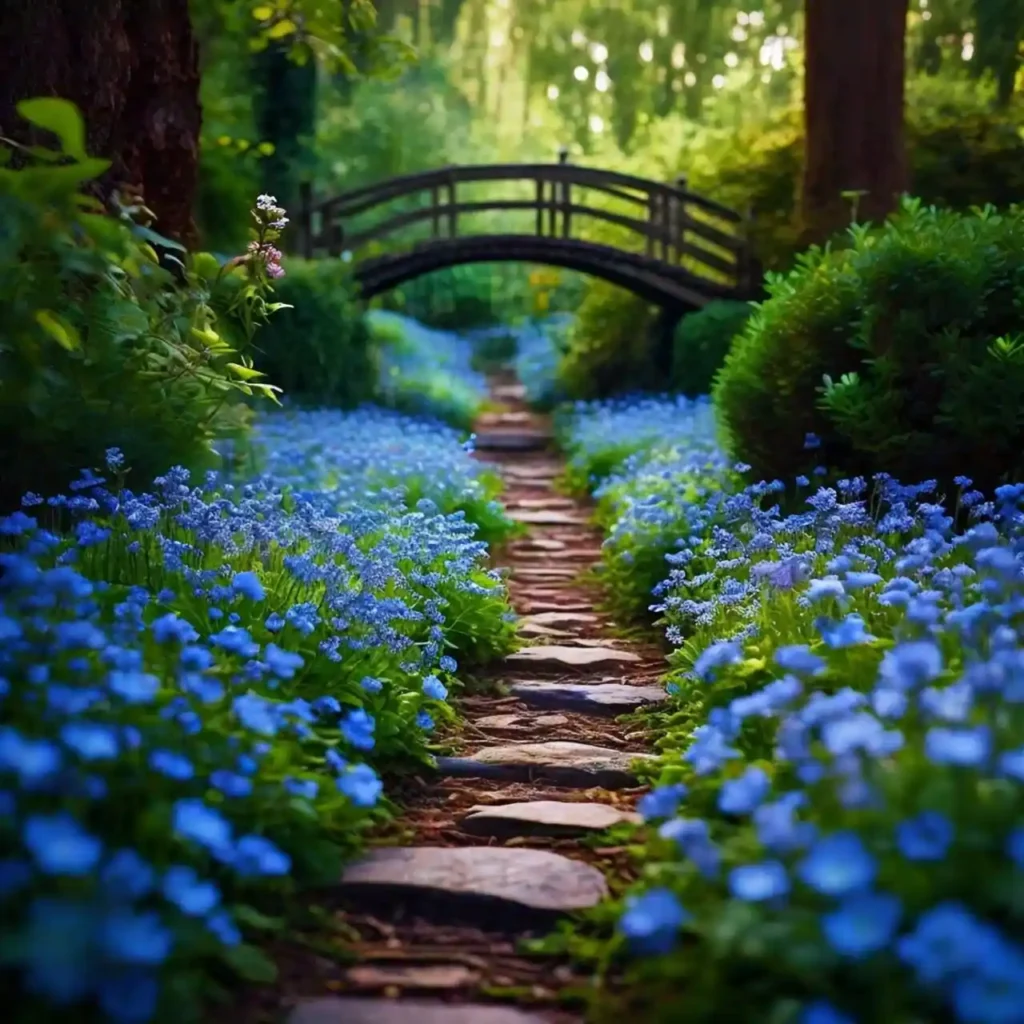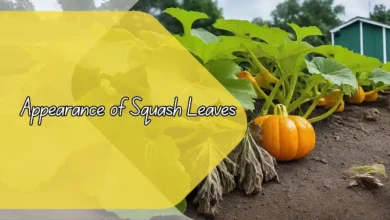
Discover the Charm of Small Blue Flower Ground Cover
In this article, we will explore the beauty and benefits of small blue flower ground cover plants. From their charming aesthetic appeal to their practical uses in gardening, these delicate plants bring a touch of elegance to any outdoor space.
Discover how to incorporate small blue flower ground cover in your garden and create a stunning landscape that will make your neighbors green with envy!
What are Small Blue Flower Ground Cover Plants?
Small blue flower ground cover plants are low-growing, spreading perennials that produce an abundance of tiny blue blossoms. These plants are perfect for covering bare patches of soil, preventing weeds, and adding color to your garden.
Their delicate flowers and dense foliage create a lush carpet that can fill in gaps between larger plants, pathways, and rock gardens.
Some popular varieties of small blue flower ground cover include creeping speedwell, lobelia, and lithodora. These plants are easy to care for and can thrive in a variety of growing conditions, making them a versatile choice for any garden.

How to Plant Small Blue Flower Ground Cover
Planting small blue flower ground cover is a relatively simple process. Begin by preparing the soil in the desired planting area, removing any weeds and debris. Dig a small hole for each plant, making sure to space them according to their specific requirements.
Once the plants are in the ground, water them thoroughly to help establish their roots. Mulch around the base of the plants to retain moisture and suppress weed growth.
Regular watering and occasional fertilization will help keep your small blue flower ground cover healthy and thriving.
Where to Use Small Blue Flower Ground Cover
Small blue flower ground cover plants can be used in a variety of garden settings to add a pop of color and texture. Plant them along the edges of garden beds, in rock gardens, or between stepping stones to create a visual impact. These plants are also great for filling in gaps in perennial borders or hanging baskets.
Consider planting small blue flower ground cover around trees or shrubs to create a cohesive look and help retain soil moisture.
They can also be used to cover slopes or hillsides, preventing erosion and adding visual interest to your landscape.

How to Care for Small Blue Flower Ground Cover
Caring for small blue flower ground cover is relatively low-maintenance. These plants thrive in well-drained soil and full sun to partial shade. Regular watering is essential, especially during hot, dry periods. Deadheading spent flowers will encourage continuous blooming and keep the plants looking tidy.
Prune back any overgrown or leggy growth to maintain a neat appearance and encourage new growth. Applying a slow-release fertilizer in the spring will help promote healthy growth and abundant blooms throughout the growing season.
Can Small Blue Flower Ground Cover Be Used as a Lawn Substitute?
While small blue flower ground cover plants can provide lush coverage in certain areas of the garden, they are not typically recommended as a full lawn substitute. These plants do not tolerate heavy foot traffic well and may not withstand mowing or trampling.
However, they can be used to create a lawn alternative in small, less-trafficked areas of the garden where their delicate beauty can be appreciated.
Consider incorporating a small blue flower ground cover into your landscape design as an accent rather than a complete replacement for traditional turf grass. Pairing these plants with other low-maintenance ground covers and ornamental grasses can create a diverse and visually appealing garden space.

How to Propagate Small Blue Flower Ground Cover
Propagating small blue flower ground cover plants is a simple process that can help you expand your garden without breaking the bank.
Many varieties can be propagated by division, cuttings, or seed. To propagate by division, simply dig up a mature plant and separate it into smaller sections, each with its own root system.
Cuttings can be taken from healthy, established plants and rooted in a moist growing medium to develop new plants. Seeds can be collected from spent flowers and sown in a seed-starting mix for germination.
With a little patience and care, you can quickly increase your small blue flower ground cover collection and create a thriving garden filled with these charming plants.

Conclusion
Small blue flower ground cover plants are a beautiful addition to any garden, providing color, texture, and charm to your outdoor space. With their low-maintenance care requirements and versatile uses, these plants are a must-have for any gardening enthusiast.
Whether you choose to plant them along pathways, in rock gardens, or as a border around trees, small blue flower ground cover will enhance the beauty of your landscape and bring joy to your gardening endeavors.
FAQs
Are small blue flower ground cover plants easy to grow?
Yes, small blue flower ground cover plants are relatively easy to grow and require minimal maintenance. With proper soil preparation, watering, and sunlight, these plants can thrive in a variety of garden settings.
Can small blue flower ground cover be grown indoors?
While small blue flower ground cover plants are best suited for outdoor garden spaces, certain varieties may be suitable for growing indoors in containers. Be sure to provide adequate sunlight, water, and drainage for indoor-grown plants to thrive.
Do small blue flower ground cover plants attract pollinators?
Yes, small blue flower ground cover plants are known to attract pollinators such as bees and butterflies with their nectar-rich flowers. By including these plants in your garden, you can help support local pollinator populations and encourage biodiversity.
How often should I fertilize small blue flower ground cover plants?
Small blue flower ground cover plants typically benefit from a slow-release fertilizer application in the spring to promote healthy growth and blooming. Be sure to follow the specific recommendations for the plant variety you are growing to avoid over-fertilization.
Can small blue flower ground cover plants be invasive?
While some varieties of small blue flower ground cover plants may have aggressive growth habits, proper care and maintenance can help prevent them from becoming invasive. Keep an eye on the plants’ spread and prune back any overgrowth to maintain control in your garden.








